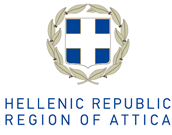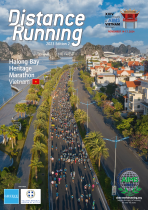Features Mt. Fuji International Marathon
01 January 2016, 8am
Running as worship
Mount Fuji Marathon
Sun 29 November 2015
The Mount Fuji Marathon grew out of the old Kawaguchi-ko marathon course which looped around Lake Kawaguchiko and Lake Saiko. Runners have from the start enjoyed great views of Mt. Fuji, which was recently added to the UNESCO World Heritage List. The race has always been held in late November which shows off the beautiful autumnal colours to best effect as leaves of trees around the lakes turn red.
This year’s starter and event ambassador was Yuko Arimori. She was silver medalist in the Olympic Marathon in both 1992 in Barcelona and in 1996 in Atlanta.
On a beautiful sunny day about 10,000 participants ran the race and could spend much of the time gazing at Mt. Fuji which was covered with a layer of lightly-powdered snow.
The Mt. Fuji Marathon, since it changed its name from the Lake Kawaguchi Marathon, has become increasingly well known to foreign runners as somewhere where they can enjoy the beautiful Japanese autumn — and their numbers have doubled since just last year. About 1000 runners from 35 countries and regions including Chinese Taipei, Hong Kong, and China participated in the event this year.
Apart from the full marathon organisers also staged the second Women’s Fantasy Run and the first Charity Run (both about 10km). Some of the proceeds from the Charity Run go towards the project of cleaning up Mt. Fuji, Another 1000 runners enjoyed these two events.
The Kawaguchiko Marathon started in 1976. It was a trailblazing event. The founders had a commitment to make it “the best marathon event at the foot of the best mountain in Japan, Mt. Fuji”. 2428 runners participated in the very first event — more than those who completed the groundbreaking citywide five-borough New York City Marathon that year. The numbers of people running increased and in 1980 Frank Shorter, an Olympic gold medalist, ran the 5th event. In 1985 the race had grown to include more than 10,000 participants. It was the first time this number had ever been reached in Japan for a full marathon.
The event laid the foundation of “the citizen runner’s marathon boom” in Japan much as the New York Marathon had done a few years earlier in the United States. The Melbourne Marathon and the Berlin Marathon linked up with the event in 1987 and in 1990 respectively but it was only in 2012 that the name was changed to “the Fuji Marathon”. The 2015 event marked the 40th anniversary of the race.
Mt. Fuji was registered with the UNESCO World Heritage List in 2013 as it symbolizes “a religious object as well as the source of art”. Since ancient time, Japan has worshipped Animism and we believe God exists within its stately form. The belief, “If Mt. Fuji appears in your dream on the night of New Year’s Day, you will stay happy during the year” has been passed down as an oral tradition in Japan.
The Fuji Marathon starts at the place of Mt. Fuji worship, Fuji Omuro Sengen Jinja, the oldest shrine on Mt. Fuji which was built in 699. “Yoshida no Himatsuri” or the “Yoshida Fire Festival”, is one of the three unique major festivals of Japan, in which an illusionistic ritual is conducted which involves strolling around the town with huge torches. “Fugaku Sanju Rokue” or the painting of 36 different patterns of Mt. Fuji seen from all over Japan is famous worldwide and it greatly influenced artists like Van Gogh and Claude Achille Debussy. “Yoshida noodle”, the soul food at the foot of Mt. Fuji, is famous to visiting Mt. Fuji worshippers for its thick ‘al dente’ noodles and is only available in this area.
Every Japanese realises that when they see Mt. Fuji they are back in Japan. The Fuji Marathon is the event which best reflects the true heart of the Japanese people. During the marathon, the runners meet 40,000 warm-hearted locals, have an opportunity to face the tranquil lake in the Saiko area, and get inspiration from Mt. Fuji which comes and goes along the course. We welcome you to participate in the Fuji Marathon. The Berlin Marathon staff found it to be “the most beautiful marathon course in the world”.
Result
marathon
Men
| 1 | Yuta | KOYAMA | JPN | 2:25:37 |
| 2 | Akiyoshi | KAMIJO | JPN | 2:27:09 |
| 3 | Haruki | OKAYAMA | JPN | 2:28:20 |
| 4 | Takahiro | IDA | JPN | 2:29:35 |
| 5 | Masachika | KITAZAWA | JPN | 2:33:59 |
Women
| 1 | Yuuki | OGAWA | JPN | 2:57:26 |
| 2 | Xin | ZHANG | CHN | 2:57:31 |
| 3 | Shiho | ASADA | JPN | 3:01:45 |
| 4 | Hanae | MINATO | JPN | 3:08:46 |
| 5 | Natsuko | MURAMATSU | JPN | 3:09:50 |







